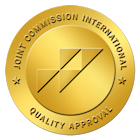Speedballing is a dangerous game to play. Shedding light on the complexities and dangers of speedballing is imperative to combating its abuse. This can be done when questions are asked, revealing the reasons for its abuse. This particular kind of substance abuse has a drastic, and oftentimes detrimental, impact on health and livelihood. The practice basically takes powerful stimulants in conjunction with a potent depressant; at the end of it all, a hazardous cocktail is abused, putting people at a dangerous risk of fatal overdose. It is for this reason that valuable insights should be brought to the surface.
What is Speedballing?
Speedballing is a dangerous practice involving the simultaneous consumption of stimulants and depressants; it is most commonly done with heroin (a depressant) and cocaine (a stimulant). This method of drug use seeks to create an intense high, blending the euphoria attributed to stimulants with the sedative effects of depressants. However, this combination significantly increases the risk of overdose; it has a contradictory effect that can confuse the body’s ability to properly respond. The danger is that the combination often masks critical overdose symptoms and leads to potentially fatal consequences.
What Substances are Typically Combined to Create a Speedball?
A speedball is a dangerous combination of substances, typically heroin and cocaine. Heroin, a depressant, and cocaine, a stimulant, are mixed and consumed together to produce a powerful, euphoric effect. This combination greatly increases the risk of overdose and other serious health complications; it simultaneously exerts high levels of stress on the heart and central nervous system. Speedballs have been known to cause sudden death or permanent damage to the body. This makes them a highly risky and potentially deadly choice of drug.
Speedballs are often used by individuals seeking an intense and immediate high. This can be especially appealing to those who struggle with addiction and may be seeking a stronger or more intense experience. However, the risks associated with speedball use far outweigh any temporary feelings of pleasure or escape.
Are There Variations in the Speedball Formula?
There are variations of the speedball formula aside from the classic mix of heroin and cocaine. Some users substitute heroin with other opioids like morphine or fentanyl for a similar sedative effect; methamphetamine is often used in place of cocaine for its longer-lasting stimulant properties. These alternatives carry their own sets of risks and can vary in intensity and danger. It’s important to note that any combination of opioids and stimulants can result in potentially fatal consequences. This is true regardless of the substances involved.
In addition to all of this, the term “speedball” is not limited to just heroin and cocaine or their substitutes. Some users may mix other drugs such as benzodiazepines (like Xanax or Valium) with stimulants like Adderall or Ritalin; this is also a dangerous and unpredictable mixture. Other variations may also include alcohol or marijuana. The problem with combining various substances is that their effects can be amplified or canceled out. This makes it difficult to predict the overall impact on the body.
What are the Effects of a Speedball?
A speedball produces a powerful, euphoric effect by mixing the stimulant with the depressant. This combination can cause an intense but perilous high, leading to various adverse effects. Physiologically, the user may experience a rapid heart rate, increased blood pressure, and an exaggerated sense of euphoria. However, the mixture significantly increases the risk of overdose, respiratory failure, and sudden cardiac arrest. Psychologically, the intense euphoria can quickly lead to addiction. The contrasting effects of the drugs put immense stress on the body’s systems; this has the potential to lead to long-term health repercussions.
How do the Effects of a Speedball Differ from Using Cocaine or Heroin Individually?
Speedball produces effects that differ significantly from using either drug individually. Cocaine’s stimulant effects lead to heightened energy, alertness, and euphoria. Additionally, it can cause extreme anxiety and agitation. On the other hand, heroin, as a depressant, induces a sense of relaxation, pain relief, and sedation. However, it also carries risks such as respiratory depression and overdose. When combined in a speedball, these substances create a powerful, yet highly risky, experience.
Those who use speedball often report an intense sense of euphoria. This is because the stimulant effects of cocaine are said to heighten and prolong the euphoric effects of heroin. Some individuals may try to counteract some of the sedative effects by using more cocaine, potentially leading to overdose. The combination of cocaine and heroin dramatically increases the strain on the heart and the risk of respiratory failure. This makes speedball use significantly more dangerous than using either drug alone.
How Popular is Speedball?
Speedball has gained notoriety within the substance abuse community for its intense high and perilous risks. This combination, often injected, is sought after for the distinctive, yet hazardous, euphoria it produces. As previously mentioned, this is achieved by mixing the stimulating effects of cocaine with the depressant effects of heroin. Its popularity among users is followed by the heightening of overdose risks and the exacerbation of the adverse effects of each drug. This presents a concerning trend in substance abuse patterns.
Who Abuses Speedballs?
Speedball is abused by individuals seeking the intense high that comes from the simultaneous experience of these opposite effects. This dangerous combination magnifies the risks associated with each drug and is associated with a higher potential for overdose and death. Persons who abuse speedball may come from various backgrounds and demographics but are typically driven by one thing: a desire to experience a unique and powerful euphoria. This is often done without completely understanding the severe health risks.
Why Do People Combine Stimulants and Depressants for Speedball?
People combine stimulants and depressants for speedball to experience the euphoric effects of both drug types simultaneously. The stimulant, typically cocaine, provides an intense burst of energy and euphoria; the depressant, often heroin, aims to smooth out the jittery edge produced by the stimulant. This leads to a complex, often dangerously synergistic high. This combination is particularly risky, as it masks the effects of each drug. This potentially leads users to consume higher quantities than they would otherwise. When this happens, it significantly increases the risk of overdose and other serious health complications.
How Does the Combination of Cocaine and Heroin Contribute to the Risk of Overdose?
The combination of heroin and cocaine significantly increases the risk of overdose; it combines the depressant effects of heroin with the stimulant effects of cocaine. This dangerous mix can confuse the body’s vital systems. While heroin slows down the body’s respiratory rate, cocaine increases heart rate and blood pressure.
The contradictory effects of either of these substances can mask the signs of an overdose; this leads users to consume higher amounts of both substances without recognizing the imminent danger. This increases the likelihood of respiratory failure, heart attack, stroke, or death, making speedballing a particularly risky form of substance abuse.
Are There Treatment Approaches for Individuals Struggling with Speedball Addiction?
 There are several effective treatment approaches for individuals struggling with speedball addiction. Treatment typically starts with detoxification to safely manage withdrawal symptoms. Following detox are comprehensive treatment programs that include both behavioral therapies and detox. These treatments include cognitive-behavioral therapy (CBT) and contingency management. These approaches are designed to address the psychological aspects of addiction, reduce cravings, and equip individuals with coping strategies. Healthier coping strategies help to manage triggers and prevent relapse. Additionally, support groups and aftercare programs play a crucial role in sustaining long-term recovery.
There are several effective treatment approaches for individuals struggling with speedball addiction. Treatment typically starts with detoxification to safely manage withdrawal symptoms. Following detox are comprehensive treatment programs that include both behavioral therapies and detox. These treatments include cognitive-behavioral therapy (CBT) and contingency management. These approaches are designed to address the psychological aspects of addiction, reduce cravings, and equip individuals with coping strategies. Healthier coping strategies help to manage triggers and prevent relapse. Additionally, support groups and aftercare programs play a crucial role in sustaining long-term recovery.
What Signs or Symptoms May Indicate That Someone is Using or Has Used a Speedball?
Speedball abuse often presents with a series of distinct signs and symptoms, indicative of its potent and hazardous nature. Individuals using speedball may exhibit erratic behavior, extreme mood swings, and a rollercoaster of high energy. This is often followed by sudden drowsiness or sedation. Physical signs include noticeable changes in pupil size, irregular heart rate, and difficulties in breathing. Additionally, the contradiction between the stimulant and depressant can lead to several scenarios. Some of these include severe internal confusion, increased risk of overdose, and unpredictable health complications. This happens because the body is simultaneously processing the conflicting effects of the substances.
Addiction Treatment for Speedball in Portland at Crestview
At Crestview Recovery, our approach to treating speedball abuse is comprehensive and tailored to the individual’s specific needs. Speedball is dangerous; it presents unique challenges in addiction treatment, requiring a blend of medical detoxification, individual counseling, and group therapy. This is done to address both the physical and psychological dependencies.
Our dedicated team of professionals works closely with each patient to develop a personalized treatment plan. This helps individuals defeat addiction and maintain long-term sobriety. At Crestview Recovery, we aim to empower individuals to overcome addiction and reclaim their lives. We do this through a combination of evidence-based therapies, supportive environment, and aftercare planning.
Get Help for Speedball Addiction Today
 For those struggling with addiction, it oftentimes seems as though seeking help is impossible. However, at Crestview Recovery, our goal is to help each patient overcome the hurdles of substance abuse. If you or a loved one would like to find out more, you can contact us here.
For those struggling with addiction, it oftentimes seems as though seeking help is impossible. However, at Crestview Recovery, our goal is to help each patient overcome the hurdles of substance abuse. If you or a loved one would like to find out more, you can contact us here.
































